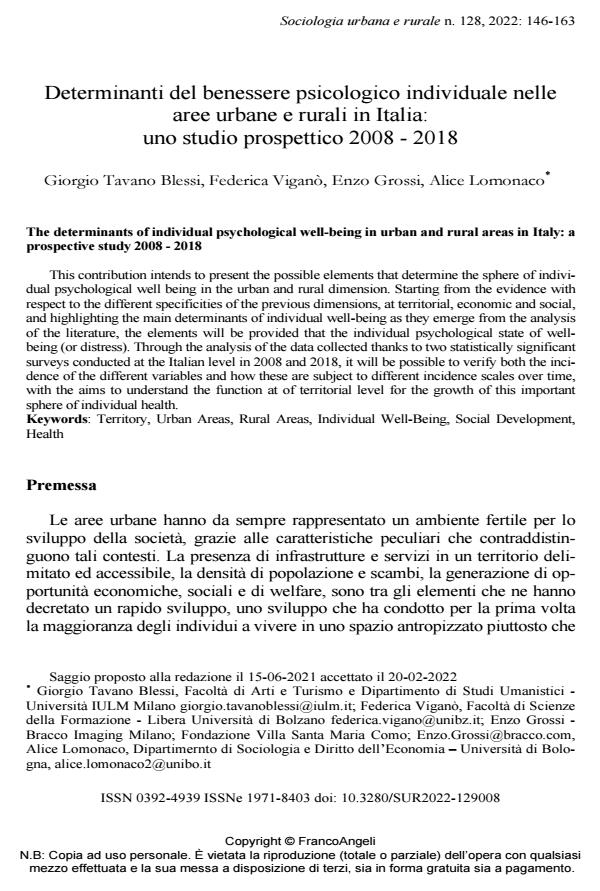The determinants of individual psychological well-being in urban and rural areas in Italy: a prospective study 2008 - 2018
Journal title SOCIOLOGIA URBANA E RURALE
Author/s Giorgio Tavano Blessi, Federica Viganò, Enzo Grossi, Alice Lomonaco
Publishing Year 2022 Issue 2022/129
Language Italian Pages 18 P. 146-163 File size 319 KB
DOI 10.3280/SUR2022-129008
DOI is like a bar code for intellectual property: to have more infomation
click here
Below, you can see the article first page
If you want to buy this article in PDF format, you can do it, following the instructions to buy download credits

FrancoAngeli is member of Publishers International Linking Association, Inc (PILA), a not-for-profit association which run the CrossRef service enabling links to and from online scholarly content.
This contribution intends to present the possible elements that determine the sphere of individual psychological well being in the urban and rural dimension. Starting from the evidence with respect to the different specificities of the previous dimensions, at territorial, economic and social, and highlighting the main determinants of individual well-being as they emerge from the analysis of the literature, the elements will be provided that the individual psychological state of wellbeing (or distress). Through the analysis of the data collected thanks to two statistically significant surveys conducted at the Italian level in 2008 and 2018, it will be pos-sible to verify both the incidence of the different variables and how these are subject to different incidence scales over time, with the aims to understand the function at of territorial level for the growth of this important sphere of individual health.
Keywords: Territory, Urban Areas, Rural Areas, Individual Well-Being, Social Development, Health
- Il ruolo della cultura nella costruzione del benessere. Evidenze a livello nazionale 2008-2018 Giorgio Tavano Blessi, Federica Viganò, Enzo Grossi, in SOCIOLOGIA URBANA E RURALE 130/2023 pp.111
DOI: 10.3280/SUR2023-130007
Giorgio Tavano Blessi, Federica Viganò, Enzo Grossi, Alice Lomonaco, Determinanti del benessere psicologico individuale nelle aree urbane e rurali in Italia: uno studio prospettico 2008 - 2018 in "SOCIOLOGIA URBANA E RURALE" 129/2022, pp 146-163, DOI: 10.3280/SUR2022-129008